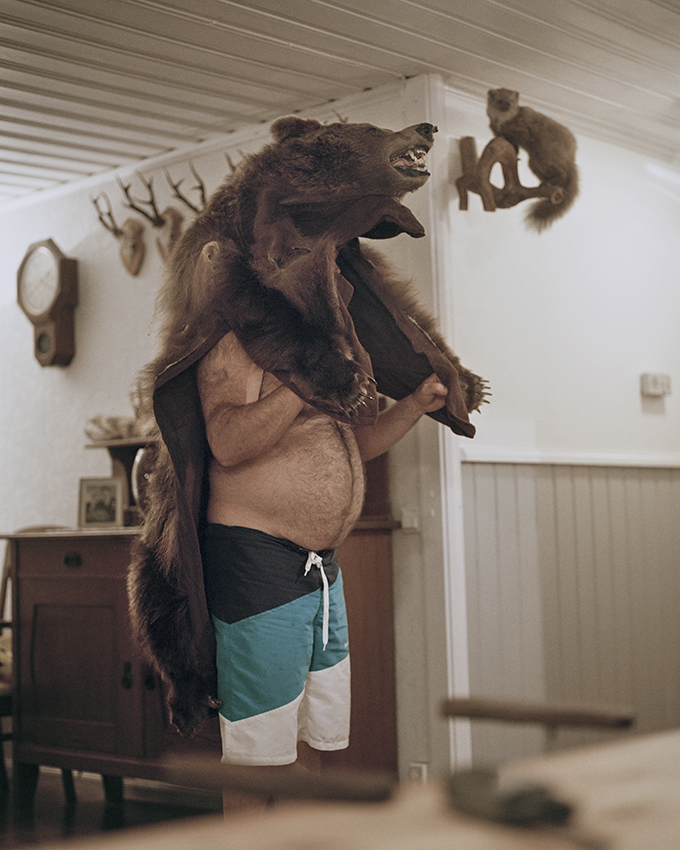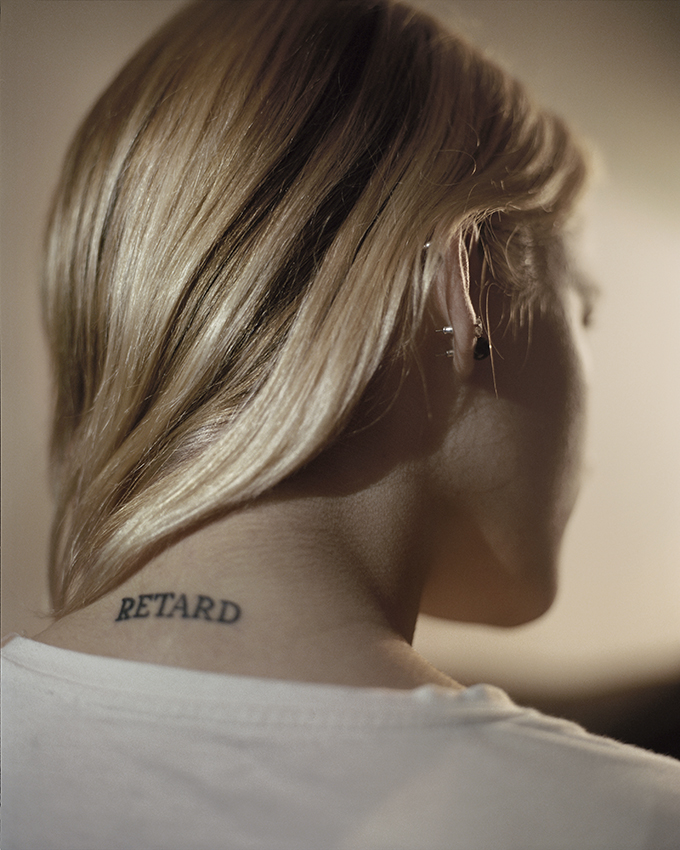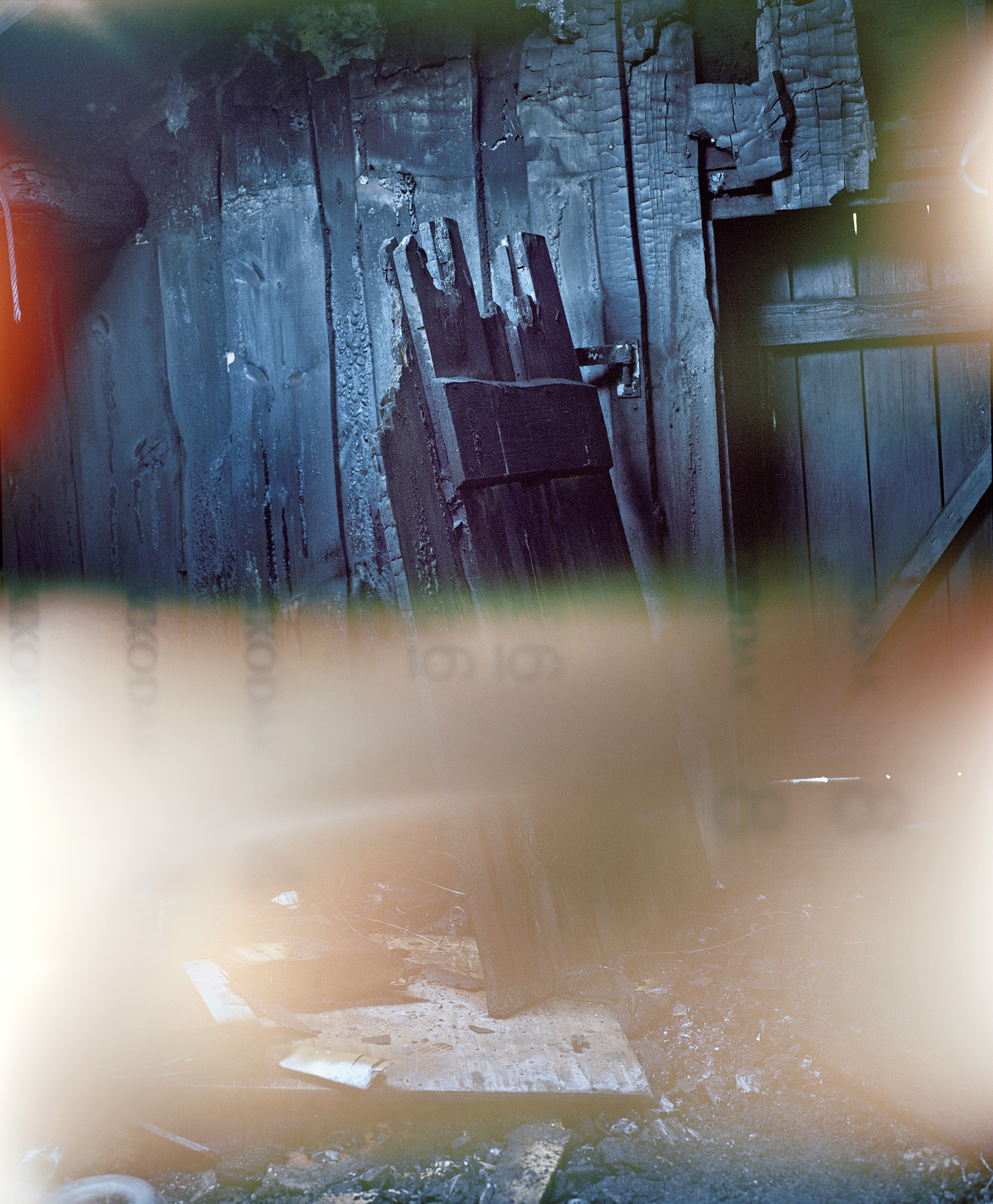Port’s photography director, Max Ferguson, discusses Maja Daniels new book – an otherworldly examination of lost language, photographic fragility and the occult

“Älvdalen is part of what I call home,” says Swedish photographer Maja Daniels, “a large part of my youth was spent there, in a small cabin by the river.” Daniels, who spent several years making these photographs, spoke to me about her new book Elf Dalia, witchcraft and returning to this remote forested valley in Sweden where they speak a language closer to the Vikings’ Old Norse than modern Swedish. This language, Elfdalian, is spoken by only a few thousand people. Daniels’ family can speak it, but she cannot.
Elf Dalia presents two photographers’ pictures: Daniels’ images in colour and Tenn Lars Persson’s archive images in black and white. Daniels explains that “The Local Heritage Foundation in Älvdalen take care of what left behind, which was almost 5,000 glass plates, photographs that he made in the early 1900s.” These photographs reflect Persson’s interest in strange happenings and the occult. Älvdalen has long been associated with these things. In 1668, following a girl being accused of walking on water, nineteen girls and one man were accused of witchcraft. They were all executed, first by beheading and then their bodies burned. The dialogue between two photographers, separated by many decades, is coherent thanks to masterful sequencing. Daniels describes it as something akin to a conversation, saying that “a few of my images create something that could resemble a sentence, and a few of his images respond. Together the images express something that is related to my own fantasies about what an ‘Elfdalian worldview’ might behold”.

The time when photographs are supposed to be taken, the golden hour – entre chien et loup – is between day and night, when the light is milky and soft shadows melt into the colours. Daniels’ adeptness as a photographer is demonstrated by using this light balance in both beautiful landscapes and disarming photographs such as a girl turned away from us with ‘RETARD’ tattooed on the nape of her neck.

In another image a room is blackened blue from a fire. The charred wood is everywhere. And above the door, what was wood, is charcoal. We can see the numbers and words from the backing sheet of the medium-format Kodak film burned onto the sixth frame of the roll. This is an insight rarely afforded to the viewer and poses a question – what came before and after this? We see light leaks in other photographs too, sometimes inseparable from the soft dawn or sunset light. For Daniels, these images are both a “symbolic parallel between the fragility of a photographic negative and a language that is at the brink of disappearing”, and, “an otherworldly presence within the image”. But these malformations, usually associated with broken cameras and mistakes, also remind us that this project questions a presumed truth – photographs depict real things.

The title is Daniels’ own bastardisation of Elfdalian. She was keen for the name to be made up to, “ensure that the book is not read in a too straight-forward manner.” We are presented with truths: the language, the place, Tenn Lars’ archive. But for Daniels, who is adept at conjuring narratives, “It does not exist in this world as such. If someone looks at the work and decides to go visit Älvdalen they risk being disappointed.”
Elf Dalia (2019) by Maja Daniels is published by MACK and will form part of a group exhibition, curated by Emma Bowkett, at Peckham 24 this May